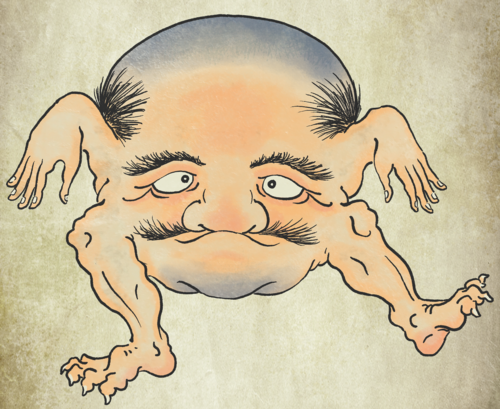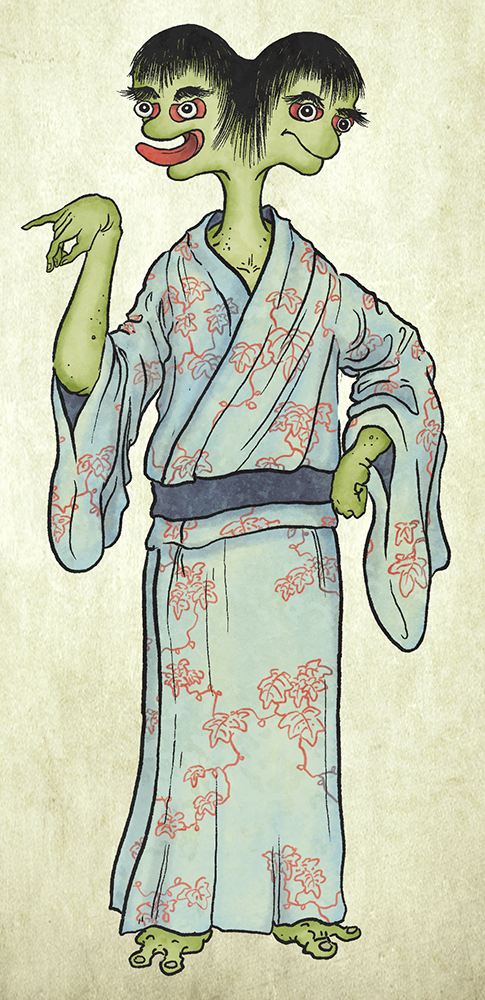Typhoon #25 is hovering overhead as I write this. Painting and translating is a nice distraction from the storm. Normally I’m a big fan of stormy weather, but this year has been too much. We’ve had the heaviest snowfall in 36 or so years, one of most dangerously hot summers on record, and the most recent 3 typhoons have been among the strongest to ever hit Japan. This year has been full of terrible floods, earthquakes, and landslides, and just all around bad weather. So it makes me a little nervous to hear the wind roaring and the feel the house shaking violently in the storm. Focusing on yokai is a fun way to take a break from reality.

Gotaimen
Gotaimen
“whole body face”
Gotaimen is a yokai who consists of an oversized human face with stumpy arms and legs protruding from it. He has no body. He also has no clothes, but then again, without a body, there’s nothing to cover up. Overall, he’s got a bit of a crab-like appearance.
Gotaimen comes from the same Matsui Bunko Hyakki yagyo emaki that we’ve been looking at so far. Just like the other yokai on that scroll, there is no indication as to what he does, so his secrets likely died with the artist. Still, that hasn’t stopped yokai researchers from speculating on the meaning of this yokai.
Gotaimen literally means whole body face. “Men” means face, and “gotai” means the five limbs, i.e. the arms, legs, and the head, but in general refers to the whole body. So his name is quite a literal description of the yokai.
It’s been speculated that gotaimen is a yokai similar to nigawarai, who causes people to behave in a certain manner. Because of the way his limbs are oriented, he probably has to sidle back and forth the way a crab walks. “Kani no yokobai” (crab walking) is a Japanese idiom for a person who speaks in a way that avoids the matter at hand, sidestepping the conversation, and changing the subject.
“Taimen” is also a word which describes concern for one’s honor or appearance in front of others. It’s possible that gotaimen is a yokai who causes people to be overly concerned with their appearance or the way they are perceived by their peers.
Another theory is that gotaimen is a yokai who brings out joy in people. In this case, he is more related to haradashi (he resembles haradashi in a way as well). According to this theory, gotaimen haunts the receiving rooms of large manors and palaces belonging to daimyo or aristocrats. When visitors arrive, he makes his appearance, dancing around and causing the guests to laugh. If the visitors don’t laugh at his antics, he begins to cry and rampage all throughout the manor. If he is thrown out of the manor, he’ll just lie down and go to sleep right there.
So there you have it… I’m not sure I find any of those explanations overly convincing, but they are interesting theories! I would like to think of gotaimen as a yokai who finds joy in making others laugh, as there are too few of those; and we could definitely use more spirits like that these days!
Want more yokai? Visit yokai.com and check out my yokai encyclopedias on amazon.com! Still want more? You can sign up for my Patreon project to support my yokai work, get original yokai postcards and prints, and even make requests for which yokai I paint next!













